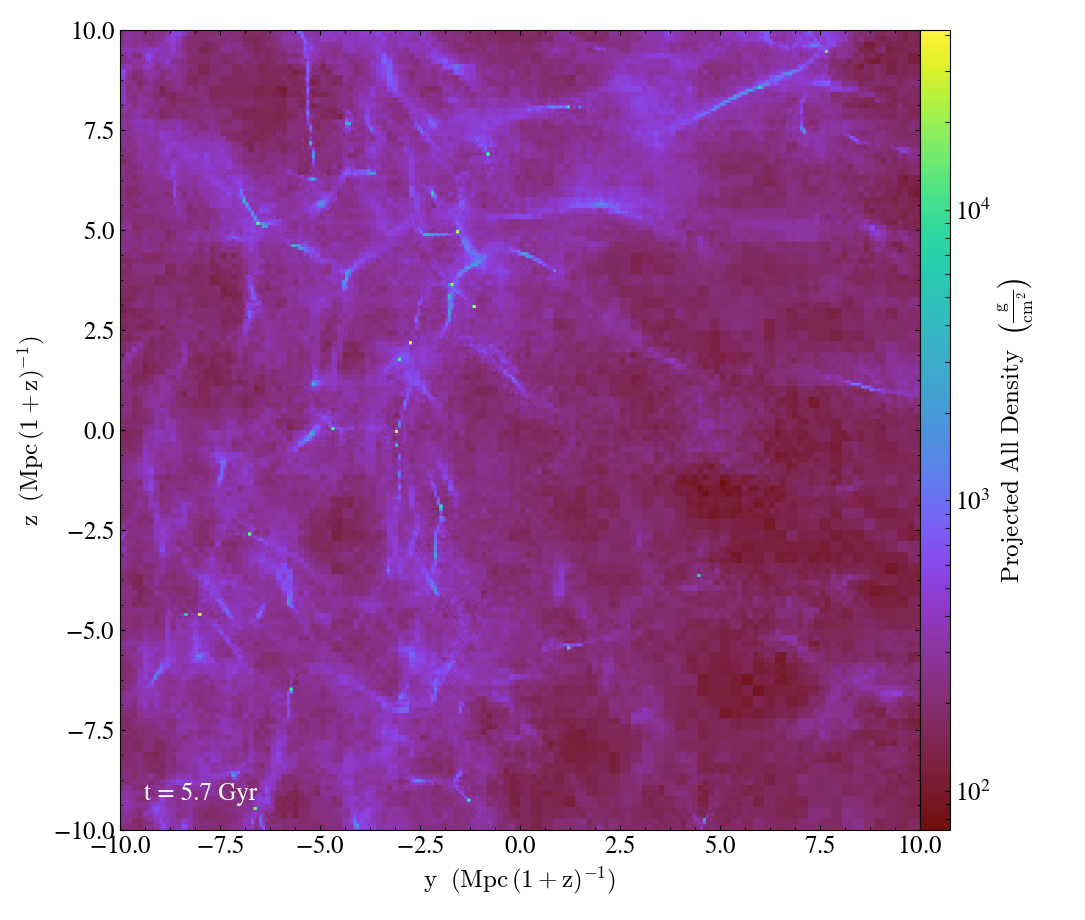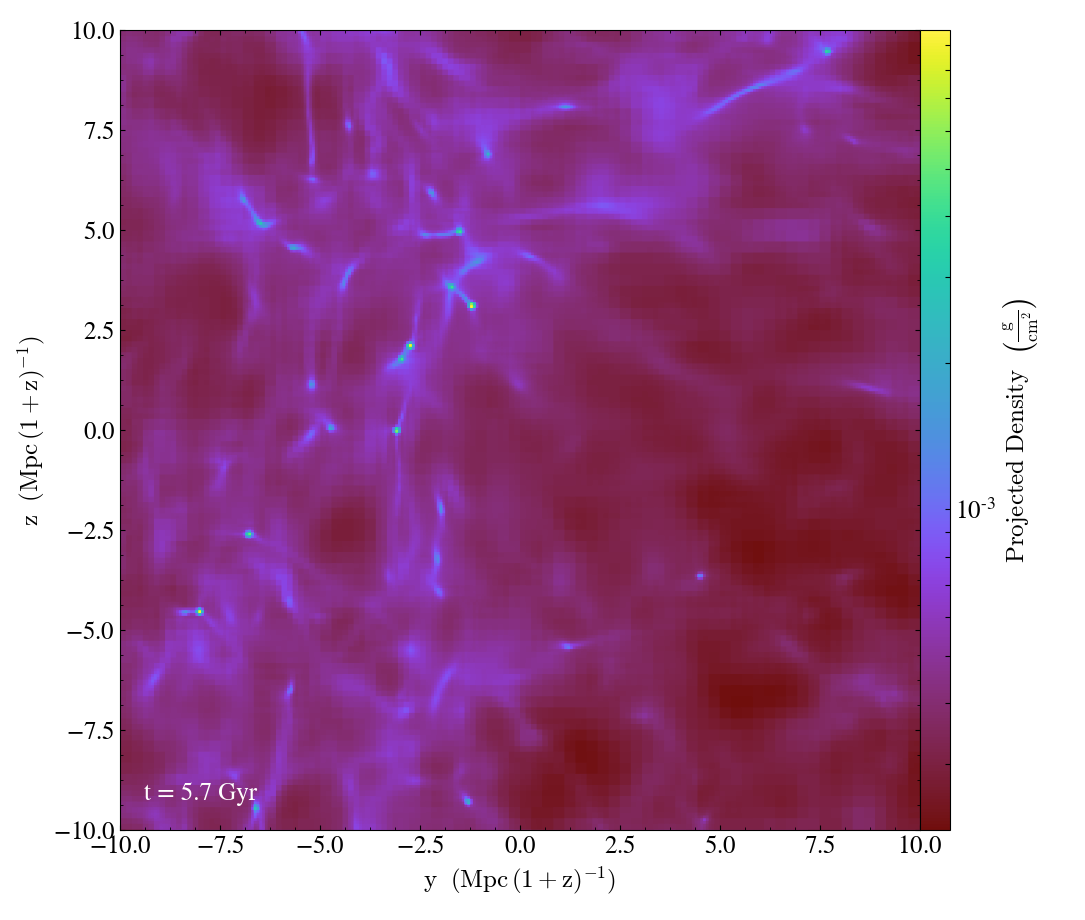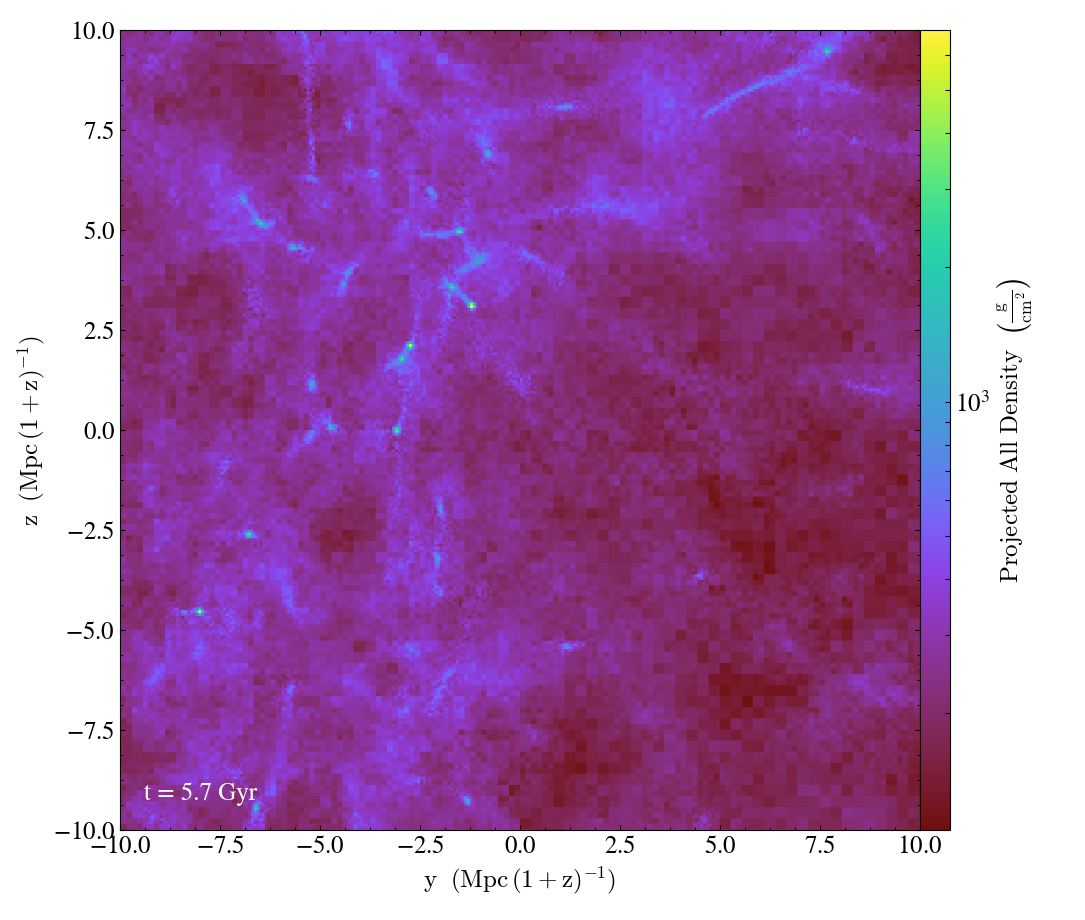From initial conditions to galaxies
Corentin Cadiou
March 29, 2018
Introduction
Classifying galaxies
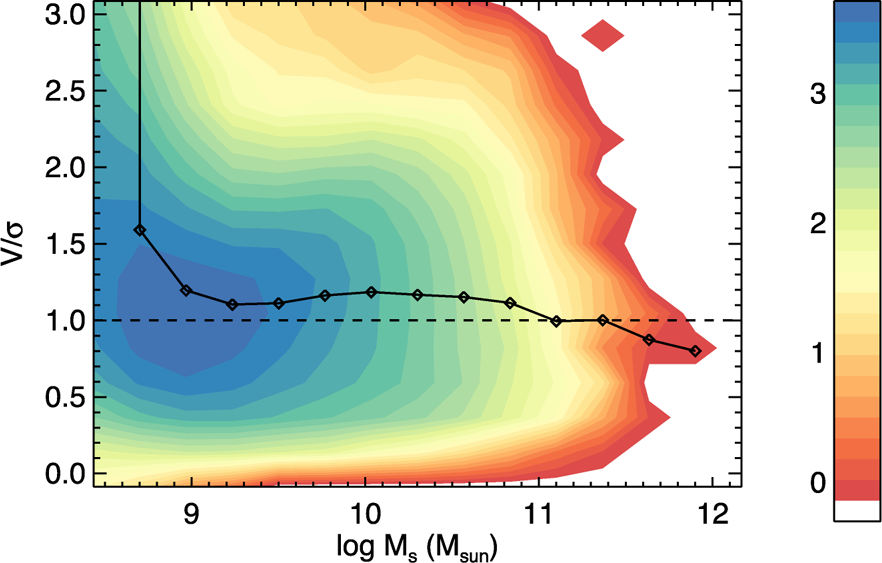
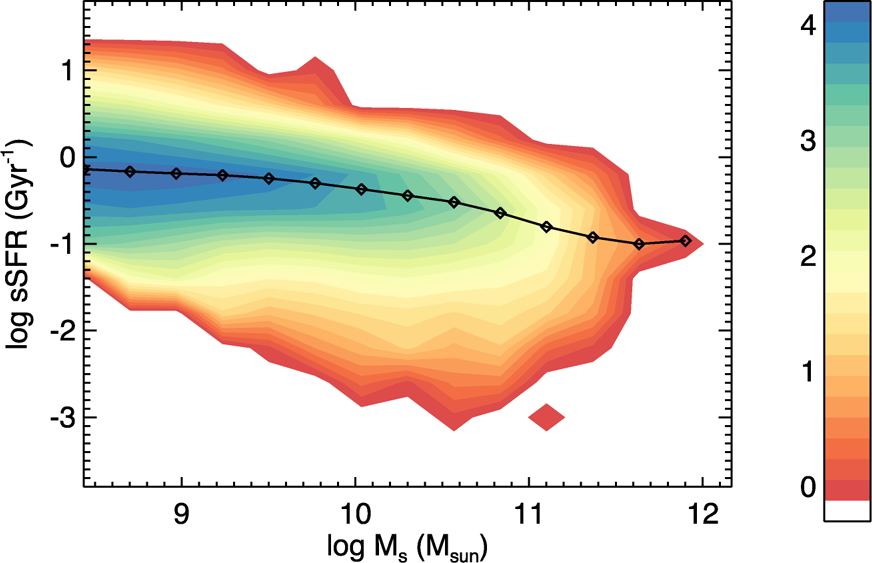
A few parameters
- \(M_{200}\)
- color / SFR
- ellipticity
- halo mass
- DM accretion?
- …
New Horizon simulation
What to do?
Theory
- (too?) simplistic
- hard to write, quick to run
- enlightening
Simulation
- “easy” to write, costly to run
- “full” physics
- not much statistics
Theory – formation in the cosmic web
Spherical collapse
| Physical space | Theoretical space |
|---|---|
| \(z_\text{form}\) | \(\rho\) |
| \(M\) | \(R\) |
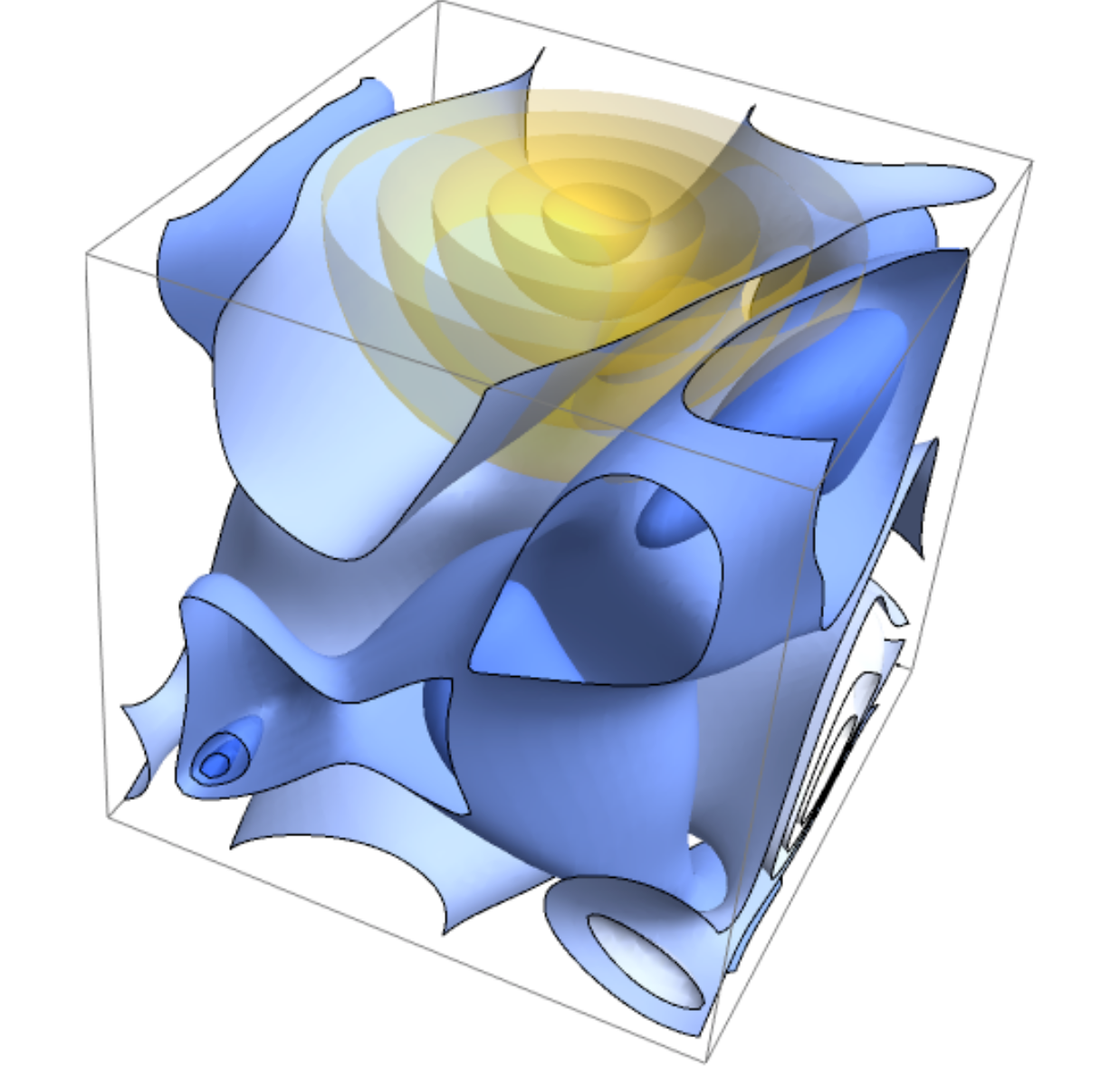
Smoothing is mass
Density is decreasing \(z\)
No need for costly simulations!
\[ M(z) = f(R, \rho(R))_{z=\infty} \]
from the initial conditions!
Encoding the cosmic web
Cosmic web: geometry of initial density field
 Continuous function of space
Continuous function of space
 Set of critical points
Set of critical points
Frame of the filaments
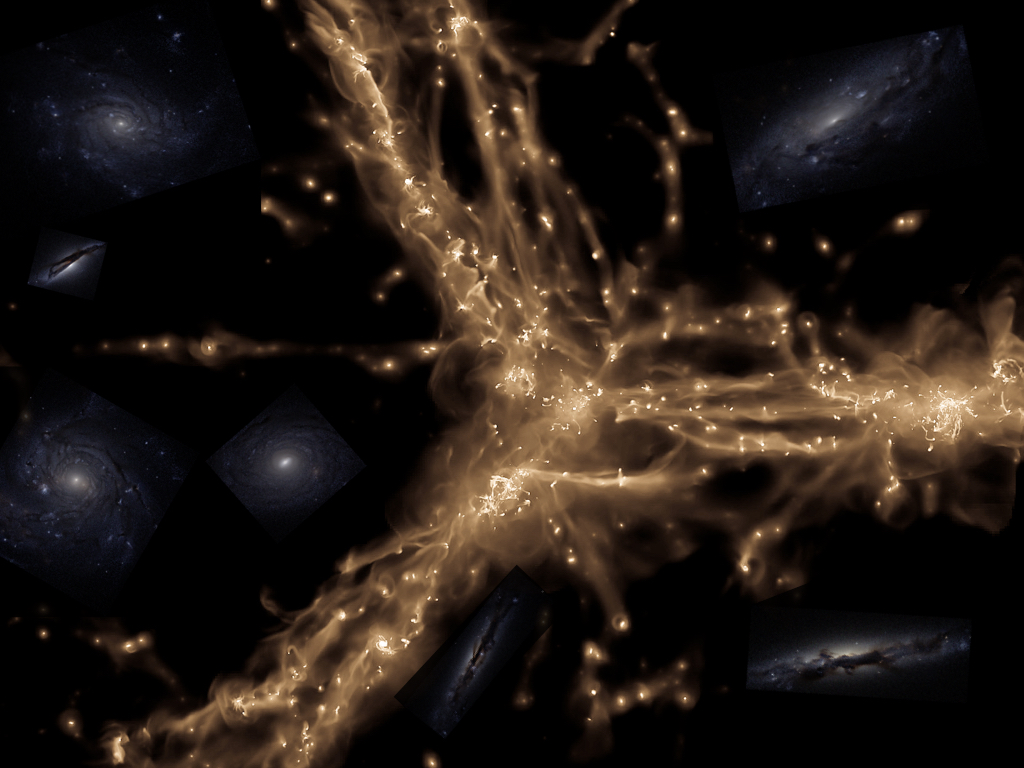
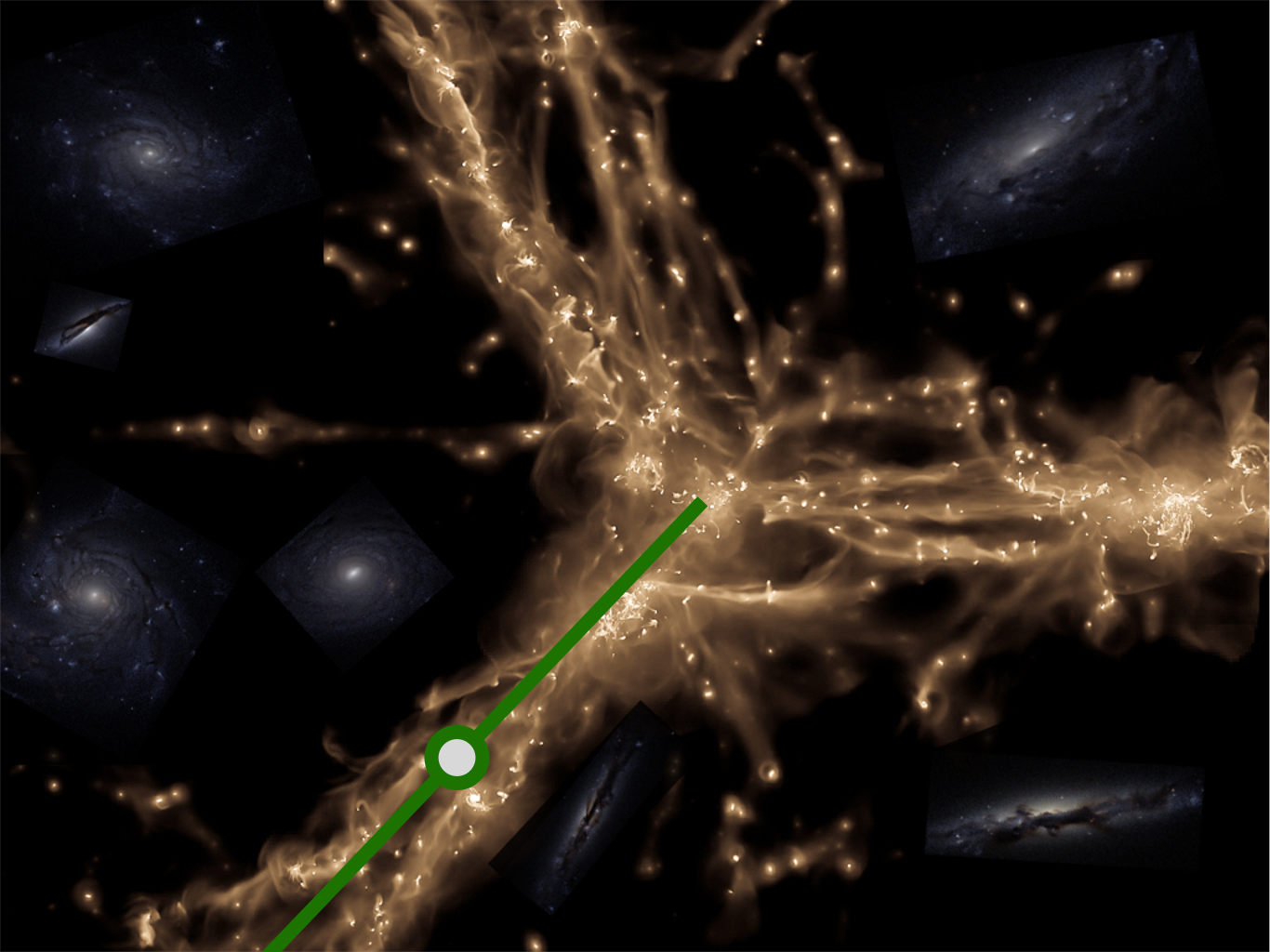
Some new results…
Halos in filaments form later and accrete more than in voids.
Halos in nodes form later and accrete more than in filaments.
Tension with observations?
Red galaxies are inside nodes
The forgotten AGNs
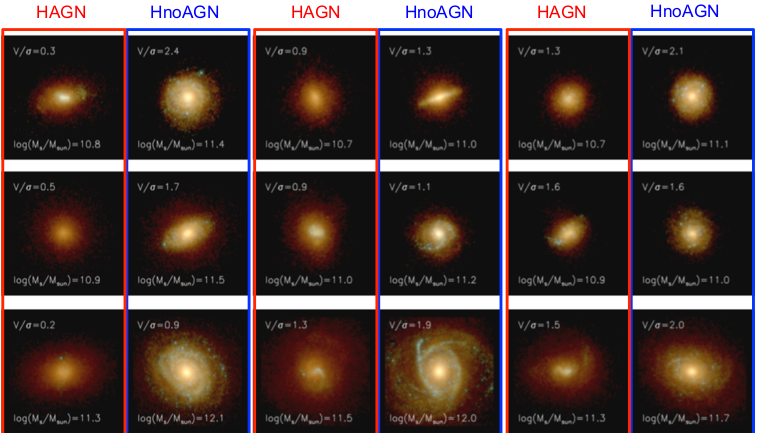
Without AGN, massive disky-blue centrals
In agreement with our findings
Modeling galaxies
On the slope of a mountain … … next to a saddle
Theory – torque on filaments
Why?
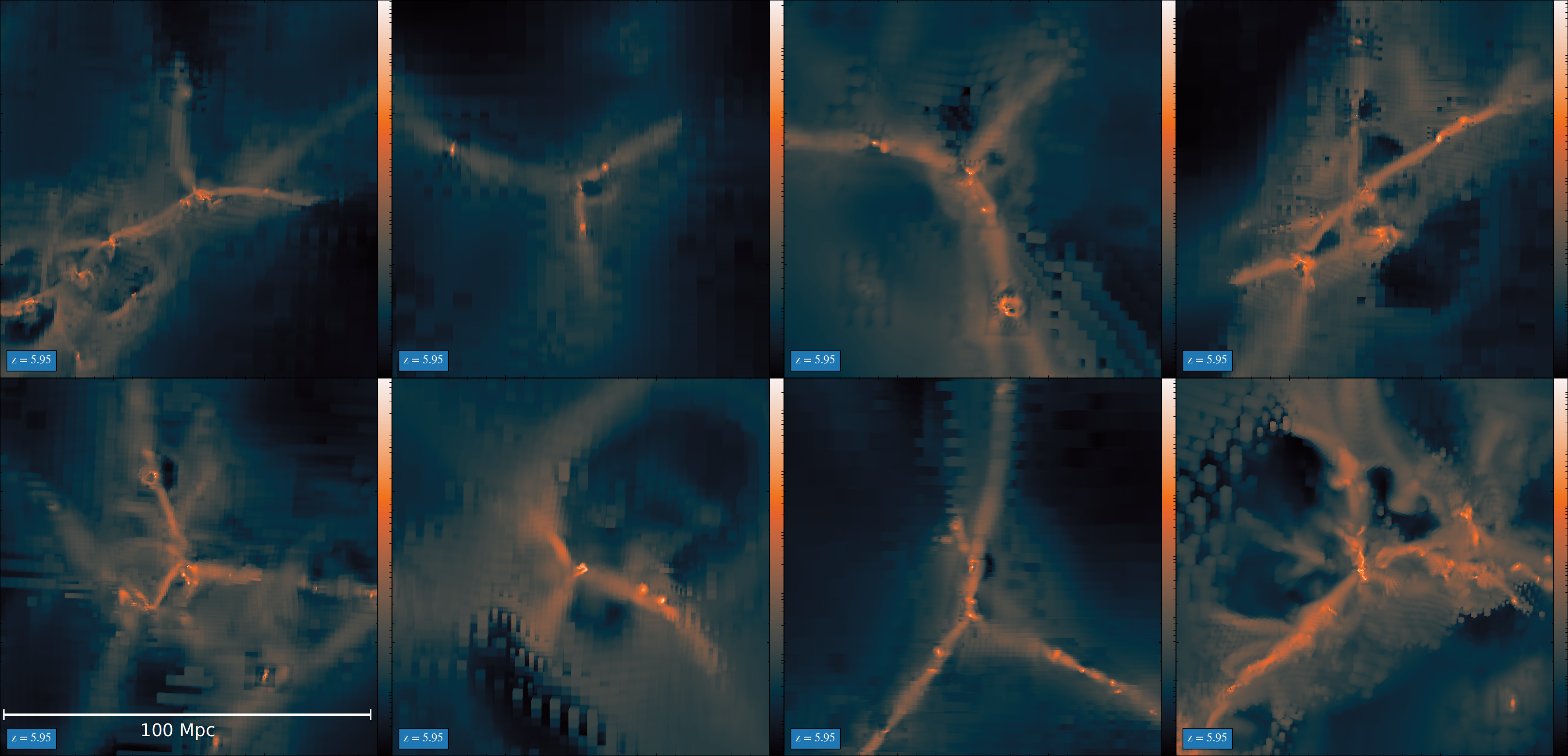 Many galaxies have 3 filaments
Many galaxies have 3 filaments
Ok, so what?
- Net torque on filaments?
- Spin-up or spin-down of the galaxy?
- Coherence scale?
- Interaction with galaxy?
Simple setup
- 2D model
- 3 voids
- 1 central peak
- \(\Lambda\)-CDM power spectrum
Results
- voids are “pushing” filaments
- there is a net torque
- can compute typical scale (WIP)
And why is that?
Simulation(s)
Objectives
- Zoom of cluster at high \(z\sim 3\)
- Follow filamentary accretion
- Study interaction between filament / disk / halo
Example science:
- effect on star formation?
- effect on AGN?
- angular momentum deposition?
- shock formation?
Setup
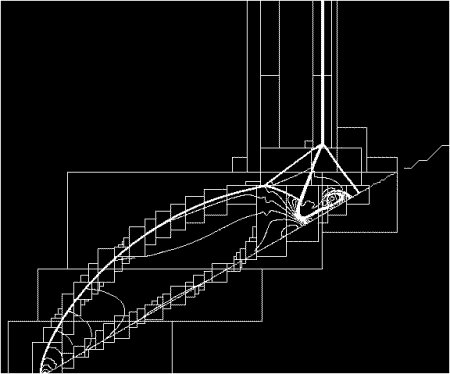
Using RAMSES AMR-based code
- AGN
- SF + feedback
- tracer particles
Specifics of tracer particles
- Cheap (CPU + RAM)
- Follow gas distribution
- Lagrangian
The need for tracer particles
Good news: they are already implemented in RAMSES!
Oh wait…
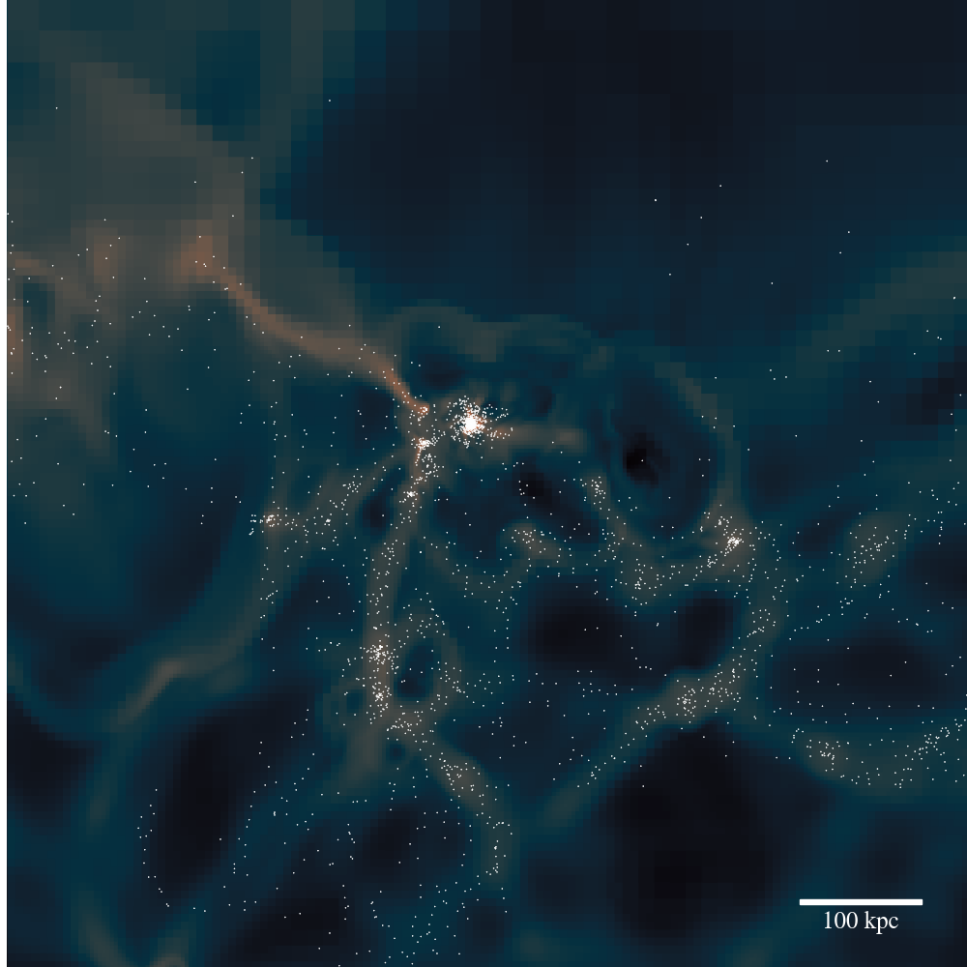
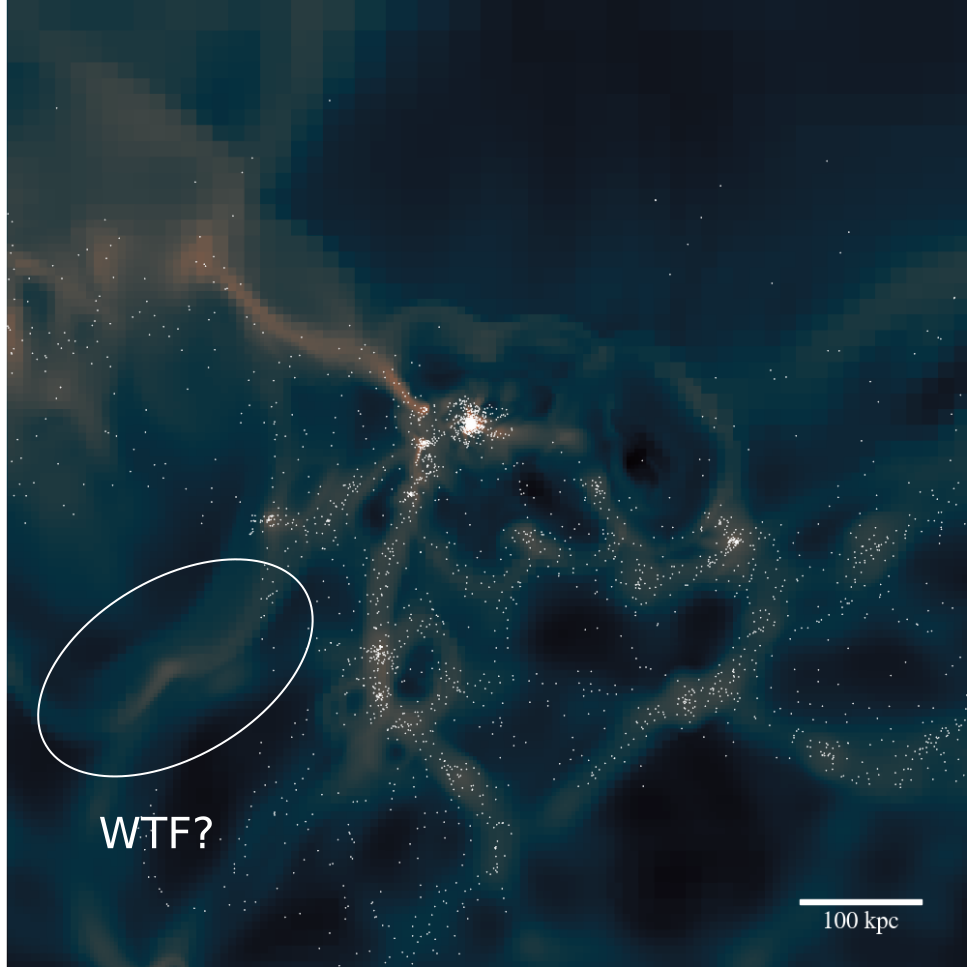
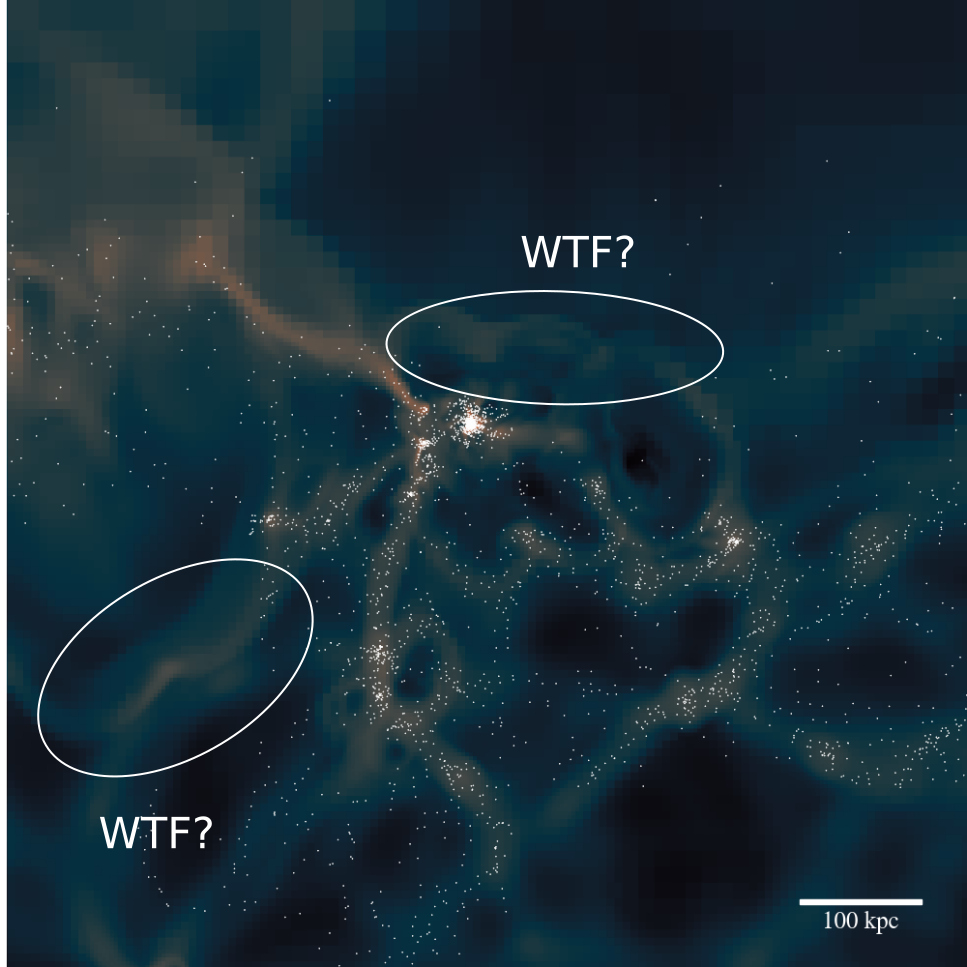
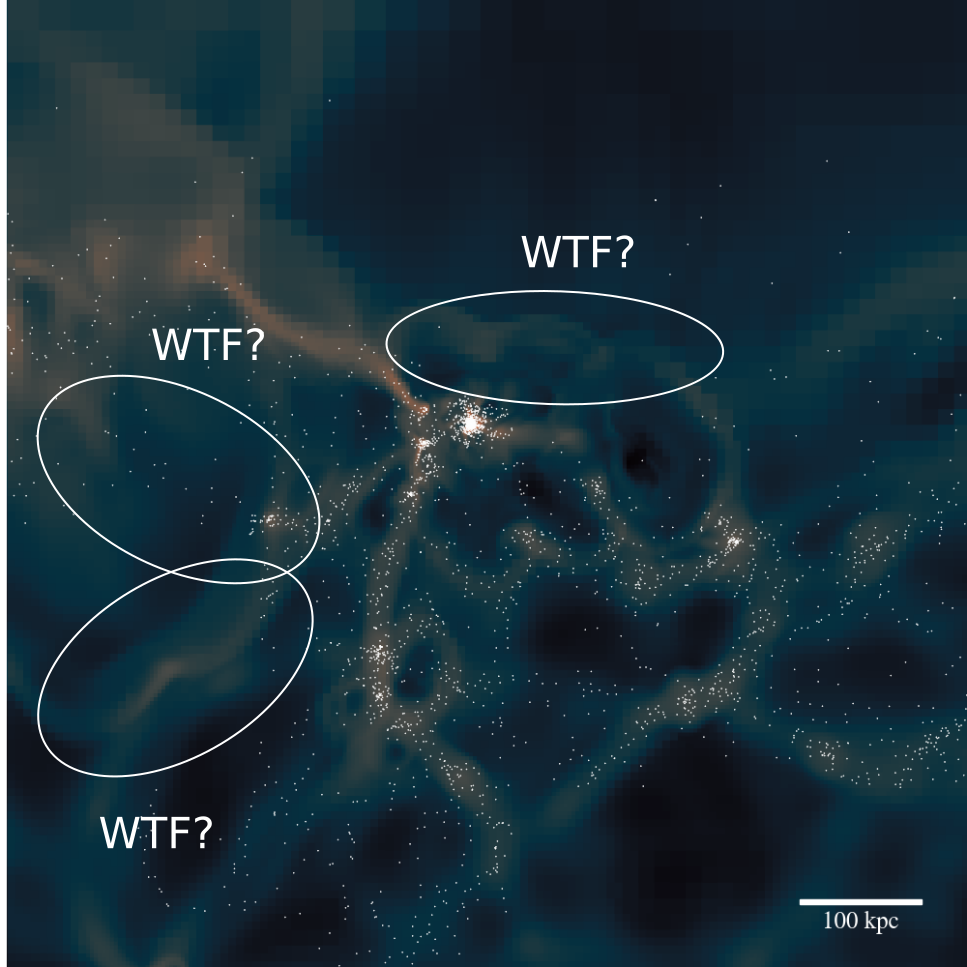
Introducing Monte Carlo Tracer Particles
\[ p_{i\rightarrow j} = \frac{\text{mass flux}_{i\rightarrow j}}{M_i} \]
Basically: they are following the fluxes computed by RAMSES (exact)
Mathematically: \[ \lim_{N\rightarrow \infty} \rho_\text{tracers} = \rho_\text{gas} \] (which is great)
We just need an infinite number of tracer particles!
Comparison
